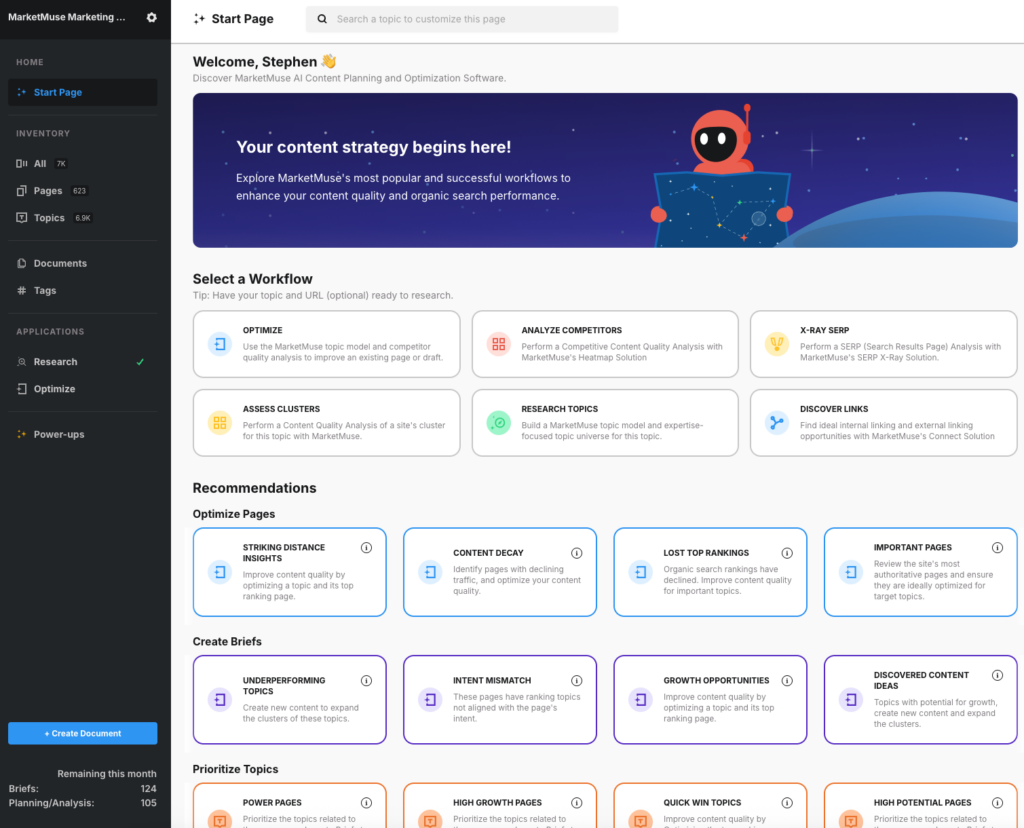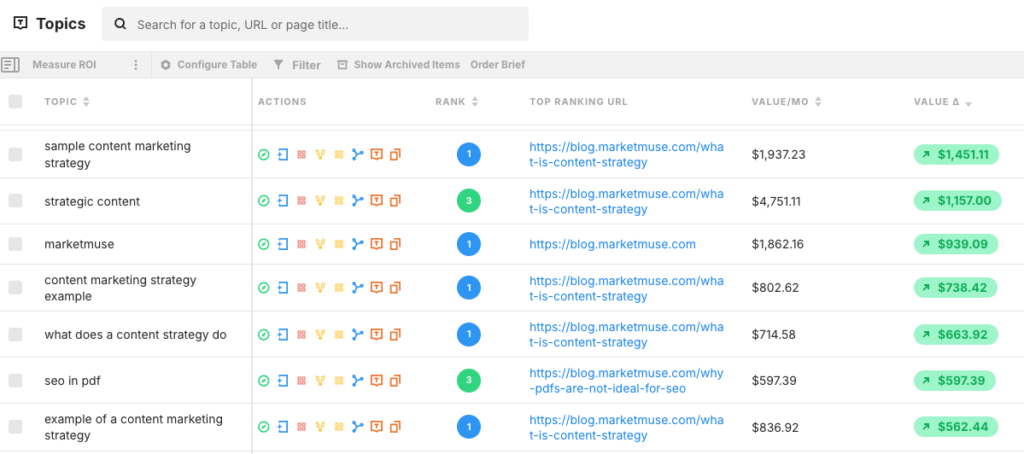Fix Your Content Engine: How to Implement an Agile Strategy for Speed and Sanity
As a content leader, you know the feeling. Your team is full of talented specialists, but they often operate in their own universes. The result is a mess of missed handoffs and endless rework cycles Deadlines become a source of stress, and you know your content process is broken, but you can’t pinpoint exactly whyWhat if you could finally get off the process hamster wheel?
There is a proven system to bring visibility to your workflow, empower your team to focus on high-impact work, and create a sustainable pace that prevents burnout. This is the promise of an agile content strategy. Forget abstract theory; this is a practical framework for managing the complexities of modern content marketing.
Now it’s time to think of your workflow issues as a needless expense that can be avoided. In this article, we’ll break down the core agile principles and provide a practical roadmap for applying them directly to your content strategy.
Why Your Current Content Workflow is Broken
If you feel like your team is “special in the way that it’s broken,” you’re not alone. Many content teams struggle because their processes were designed for a different era. The digital landscape has made marketing more complex, and old ways of working simply can’t keep up.
Here are some common ways in which the process goes off the rails:
- Siloed Teams: Your writers, designers, and SEO specialists work in separate streams. This friction leads to missed handoffs when work needs to pass between them, resulting in dropped balls and miscommunication.
- Endless Rework: Without a clear, unified process, content gets stuck in review cycles that drain your team’s creative energy and cause real delays.
- Missed Deadlines: When the workflow is a black box, it’s impossible to predict when work will be completed. This results in consistently missed deadlines and a feeling that the team is always behind.
- No Strategic Focus: Your team gets caught on a hamster wheel of urgent but low-impact tasks. The truly strategic priorities get pushed to the bottom of the list, and it becomes impossible to focus on work that moves the needle.
What is Agile Marketing (And Why Should Content Teams Care)?
Agile was born in the software world to solve these exact problems. Traditional project management was failing spectacularly, so a new system was created to manage complex, unpredictable digital work. Now, as marketing has become increasingly digital, we’ve started to break our processes in the same way, making agile more relevant to us than ever before.
But here’s the catch: many people misunderstand what agile really is.
First off, agile isn’t just about being fast and reactive. People often point to things like Oreo’s “Dunk in the Dark” tweet as agile marketing. While being responsive is great, that’s lowercase ‘a’ agile. Capital ‘A’ Agile is about building a stable, predictable process that allows for a sustainable pace, not just momentary quickness. For content producers, a sustainable pace is vital for preventing burnout and producing high-quality work.
Second, agile doesn’t mean no planning. The opposite is true. Agile requires diligent planning, but it happens in shorter, iterative cycles. Instead of a rigid annual plan, you have a long-term strategy that informs your quarterly and bi-weekly plans. It allows you to learn and adapt, ensuring you don’t waste six months on a failed campaign.
This is the promise of an agile content strategy. Forget abstract theory; this is a practical framework for managing the complexities of modern content marketing. MarketMuse, as a content intelligence platform, is designed to be the central hub for this transformation, offering predictive insights and a unified workflow to move your team off the ‘process hamster wheel’.

The Core Components of an Agile Content Workflow
Transitioning to an agile model starts with a few key components that create visibility and structure.
The Prioritized Backlog: Your Team’s To-Do List
The backlog is not a place where work goes to die. Think of it as a ruthlessly prioritized to-do list for the entire team. Every single task lives in the backlog, and the key is its prioritization. There can only be one #1 priority, one #2, and so on. This forces necessary conversations about what’s most important.
Making this list visible is a powerful educational tool. It builds empathy by showing what everyone is committed to, and it surfaces “dark work”—the hidden tasks people do as favors that still consume capacity. Once all the work is visible, you can finally have an honest conversation about priorities and capacity.
Visualizing Your Workflow: The Kanban Board
Next up, you need to visualize how work moves from an idea to a published piece. This is where a Kanban board comes in. A Kanban board is a visual representation of your workflow, with columns for each stage of your process (e.g., To Do, Writing, Editing, Publishing, Done).
The first step is to simply sketch out your current process. As one agile coach says, “If you can’t fix it, make it visible.” This exercise often reveals the hidden chaos in your system. Once it’s mapped on a board, you can see exactly where work is getting stuck. If all your tasks are piling up in the “Editing” column, you’ve found your bottleneck.
The Power of WIP (Work in Progress) Limits
Here’s the key: you must strictly limit the amount of work in progress (WIP). A WIP limit might state that the team can only have three articles in “Writing” at any given time. This forces the team to finish tasks before starting new ones. It’s counter-intuitive, but data shows this practice makes teams dramatically faster by preventing high-priority items from sitting idle for weeks.
Key Takeaway: Stop starting and start finishing. Implementing WIP limits prevents bottlenecks and forces the team to focus on completing work, which paradoxically increases overall speed.
MarketMuse assists in enforcing WIP limits by clearly identifying the highest-impact tasks. Its ‘Recommendations’ section, featuring ‘Quick Win Topics’ and ‘High Potential Pages,’ ensures that teams are always focusing on content opportunities that offer the greatest return with minimal effort, aligning with the ‘stop starting and start finishing’ philosophy.

Finding Your Flavor: Scrum, Kanban, or a Hybrid Model
There are different agile frameworks, but you don’t need to be a purist.
- Scrum: Works in short, time-boxed “sprints” (e.g., two weeks) where a team commits to a set amount of work.
- Kanban: Focuses on continuous flow and uses WIP limits to smooth out the process.
Most agile marketing teams use a hybrid model, taking elements from both to create a custom system that works for them. The goal is to build a system that fits your team’s reality.
A Practical Guide to Getting Started with Agile
Adopting agile is a transformation, not a quick fix. But getting started is easier than you think.
Step One: Just Start
Don’t spend months drafting a “perfect” transformation plan. The irony is that agile itself is designed to acknowledge you can’t have a perfect plan. The best way to start is to simply start trying things. Agile is designed to uncover issues you can’t possibly anticipate, so a bias toward action is your greatest asset.
Step Two: Run a Pilot Program
Select a small group of five to seven people to form your first agile pilot team. This creates a safe-to-fail environment where they can experiment and learn. Make this team as representative as possible of your department’s reality. For example, if your designers are a separate, shared resource, don’t embed one in the pilot team, as that creates an ideal scenario you can’t replicate later.
Key Takeaway: Your pilot team should be representative of your actual team structure, even with its limitations. Setting it up for “weird” success that can’t be replicated will only cause problems down the road.
Step Three: Measure Everything
Before you begin, establish your baseline metrics. How long does it currently take to publish a blog post? What are your typical engagement rates? Track these same metrics for the pilot team’s work. This data is your proof. When you can show leadership that the pilot team gets campaigns out in two weeks instead of two months, you have the epiphany point needed for wider rollout.
MarketMuse provides the data essential for measuring the impact of your agile transition. Through its Inventory, you can track key metrics like organic traffic estimates, content value, and changes in ranking over time. For example, a ‘Saved View’ can show you pages with the ‘Biggest Traffic Lift’ or ‘Best Potential ROI,’ providing the ‘proof’ needed to demonstrate success and secure further buy-in.

The Real-World Benefits of an Agile Content Engine
The results of a well-run agile system go far beyond just “getting more stuff done.”
First, you will see a dramatic increase in speed and productivity. By visualizing the workflow and eliminating bottlenecks, teams often reduce their start-to-finish time for a piece of content to a third of what it was previously.
Second, you will see a massive boost in team morale. One of the most powerful outcomes of agile is giving your team permission to say no. When the backlog is public and prioritized, it becomes the objective arbiter of what to work on. A team member doesn’t have to personally reject a request; they can simply point to the backlog. This is incredibly empowering and helps create the sustainable pace needed to prevent burnout.
Key Takeaway: The ultimate benefits are both quantitative and qualitative. You’ll produce more high-quality work faster, and your team will be happier and less stressed while doing it.
Conclusion: Take Control of Your Content Chaos
If your content process feels erratic and inefficient, you’re not facing a unique character flaw; you’re facing a systems problem. Traditional workflows are no longer fit for the dynamic world of digital content. An agile strategy provides the solution—a framework built on visibility, prioritization, and continuous learning.
The bottom line? By implementing a prioritized backlog, a Kanban board, and WIP limits, you give your team the structure to escape the hamster wheel and focus on strategic work. You replace chaos with clarity and burnout with a sustainable rhythm. If you’re not sure how to convince your team, start with yourself. As Andrea Fryrear suggests, “go build your own Kanban board.” The results will speak for themselves.
Stephen leads the content strategy blog for MarketMuse, an AI-powered Content Intelligence and Strategy Platform. You can connect with him on social or his personal blog.